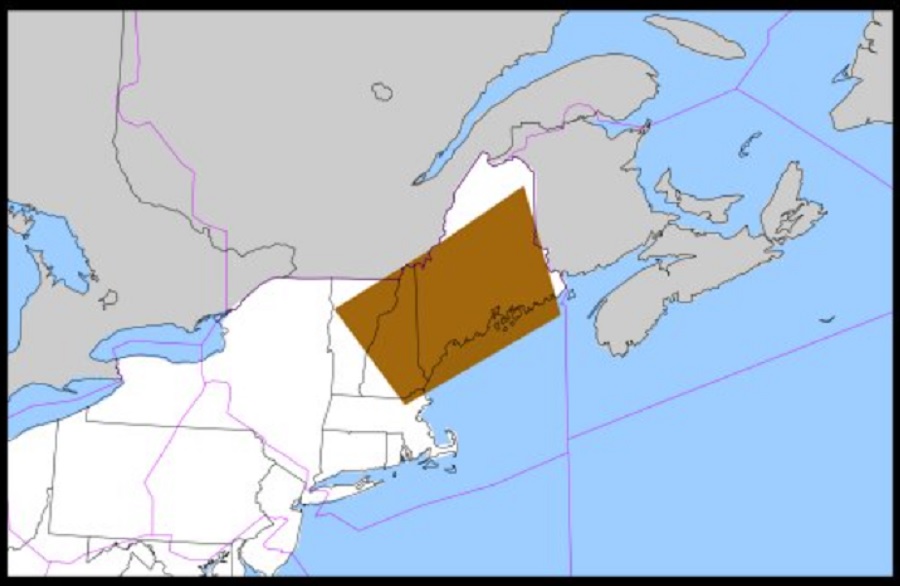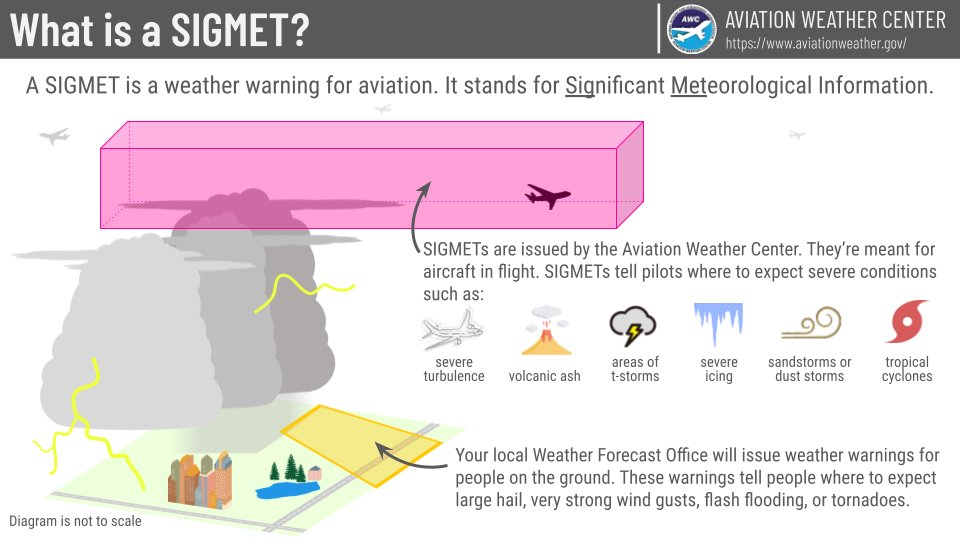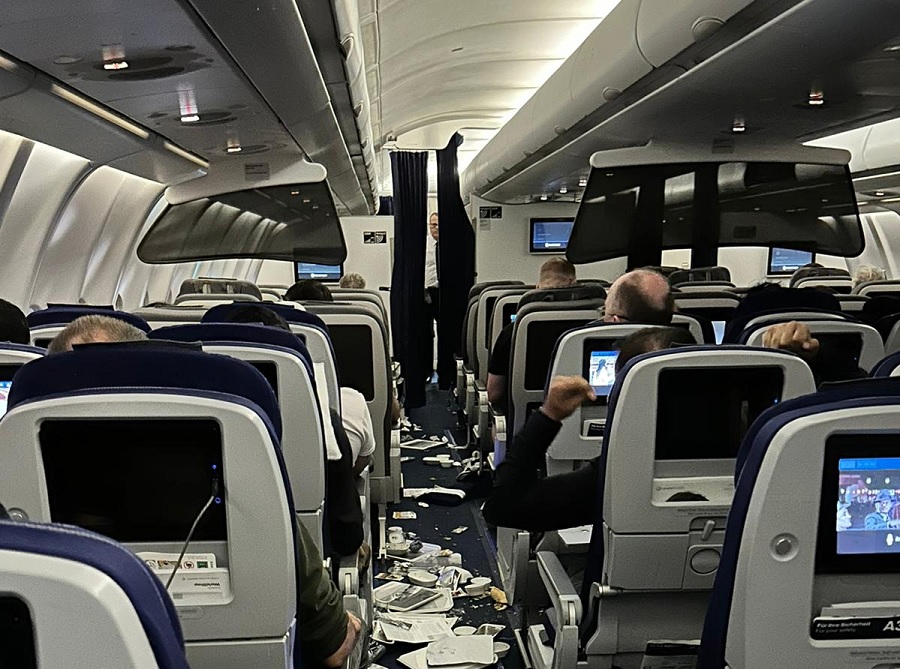
The National Weather Service’s Aviation Weather Center has issued a Severe Turbulence alert for air travelers over the northeastern U.S.; specifically, parts of Vermont, Maine, New Hampshire, and northeastern Massachusetts are covered by the advisory. This alert is up just days after a severe turbulence event claimed the life of a passenger flying through rough air over New Hampshire.
Specifically, SIGMET VECTOR 1 has been issued through at least 2035 UTC today.
According to the AWC, there is occasional severe turbulence between the surface and 6,000 feet, an important area of airspace where planes take-off and land. This turbulence is being created by strong low level winds, strong up and down drafts, and strong low-level wind shear.
Wind shear is a difference in wind speed and/or direction over a very short distance in the atmosphere. Airline pilots generally regard significant wind shear to be a horizontal change in airspeed of 30 knots (15 m/s or 34 mph) for light aircraft and 45 knots (23 m/s or 51 mph) for traditional airliners flying at flight altitude.

The National Traffic Safety Board (NTSB) has said they’ve opened an investigation to the death that occurred on an airplane that flew over the northeast on Friday. According to the NTSB, they’re investigating an incident involving a Bombardier Challenger 300 (CL30) airplane that left New Hampshire for Virginia. The aircraft took off from Dillant-Hopkins Airport in Keene New Hampshire but diverted to Bradley International Airport in Windsor Locks, Connecticut around 4pm .
Internet services provider Conexon owns the aircraft but told the media that the death didn’t involve a Conexon employee. “We ask for privacy for the family members of those involved. We have no further details of the incident at this time,” Conexon said in a brief comment to the press.
The Federal Aviation Administration (FAA) will also investigate the incident.
Friday’s fatality comes on the heels of Lufthansa Flight 469 which also encountered severe turbulence. Lufthansa Flight 469 took off from Austin, Texas last Wednesday with plans to land in Frankfurt, Germany. But after the aircraft encountered severe turbulence over Tennessee at 37,000 feet, the plane diverted to Washington, DC’s Dulles Airport in northern Virginia so that passengers and crew could get the hospitalization they needed.
Roughly 90 minutes into the flight while flight attendants were in the aisle serving food and drinks, the aircraft, an Airbus A330-300 dropped twice within about 20 seconds, plunging the plane down but sending passengers and crew that weren’t secured in their seats up in the air. One flight attendant was launched into the interior ceiling of the aircraft and punctured it, before they collapsed onto the aircraft floor. Injured passengers and crew were treated upon landing, with 7 ultimately requiring additional care in nearby hospitals.
Among the rattled passengers on board were actor Matthew McConaughey and his wife Camila. Camila McConaughey wrote on Instagram, “On Flight last night, I was told plane dropped almost 4,000 feet, 7 people went to the hospital, Everything was flying everywhere.”

There’s been a rash of severe turbulence events in recent months that have sent many passengers to the hospital.
Last month, a Newark-Tampa flight operated by United Airlines encountered severe turbulence. When flight 600 finally landed in Tampa, it was met by paramedics that treated passengers and crew at the scene. Ultimately, 1 flight attendant and 2 passengers needed hospitalization after being examined at the airport for injuries sustained during the rough flight.
Earlier this winter, a United Airlines 767 jet encountered severe turbulence on its flight to Houston, Texas. Due to that encounter with rough air, 3 crew members and 2 passengers had to be rushed to the hospital for care upon landing.

The day before the Houston incident earlier this winter, on December 18 , Hawaiian Airlines Flight 35 flew through severe turbulence before landing at Honolulu International Airport after originating in Phoenix, Arizona. A Mass Casualty Emergency Event was declared, with dozens of passengers needing care for injuries sustained in the violent ride. Officials with Honolulu Emergency Medical Services and American Medical Response say the flight encountered the extreme turbulence about 30 minutes prior to landing; they treated 36 patients at the airport. 20 patients, ranging from a 14-month old toddler to older adults, were transported to hospitals near the airport, some with serious injuries.
According to a 2021 report from the NTSB, turbulence accounted for more than 37% of all accidents on larger commercial airlines between 2009 and 2018. The FAA also released data last year that reported on 146 serious injuries related to severe turbulence from 2009 to 2021.